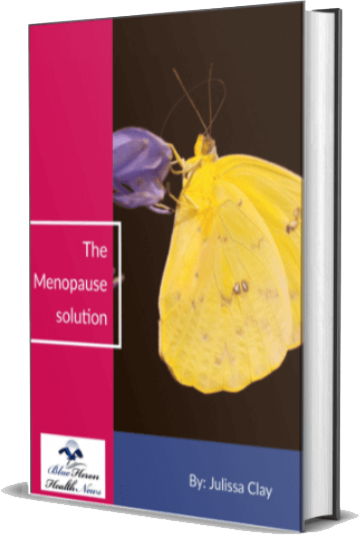
The Menopause Solution By Julissa Clay – Blue Heron Health News The Menopause Solution it can be concluded easily that you should try this program at least once if menopause is destroying your internal organs or deteriorating your physical health to a considerable level. This program can help in resolving your health issues caused by perimenopause and menopause in a completely natural manner. You can use this program without any risk as you can get your money back if you are not satisfied with its results.
What is the role of weight-bearing exercises in maintaining bone density?
Weight-bearing exercises play a crucial role in maintaining and improving bone density, which is vital for preventing osteoporosis and reducing the risk of fractures. These exercises involve activities where you work against gravity while staying upright, causing your muscles to pull on your bones. This mechanical loading stimulates bone formation and helps maintain or increase bone mass. Here’s an in-depth look at the role of weight-bearing exercises in maintaining bone density:
1. Stimulation of Bone Formation
A. Mechanical Stress and Bone Remodeling
- Bone Remodeling Process: Bones are dynamic tissues that constantly undergo remodeling, a process involving bone resorption (breakdown) by osteoclasts and bone formation by osteoblasts. Weight-bearing exercises increase mechanical stress on the bones, stimulating this remodeling process.
- Response to Load: When bones are subjected to mechanical loads, they respond by becoming denser and stronger to accommodate the stress. This response helps maintain or increase bone mineral density (BMD).
B. Increased Osteoblast Activity
- Bone-Building Cells: Osteoblasts are cells responsible for bone formation. Weight-bearing exercises stimulate these cells to produce new bone tissue, increasing bone mass and density.
- Adaptation to Stress: The body adapts to the increased demands placed on bones during exercise, leading to greater deposition of minerals, such as calcium and phosphorus, which are critical for bone strength.
2. Maintenance of Bone Mass
A. Prevention of Bone Loss
- Age-Related Bone Loss: As people age, bone resorption tends to outpace bone formation, leading to a gradual loss of bone mass. This process accelerates in women after menopause due to decreased estrogen levels.
- Exercise and Bone Preservation: Regular weight-bearing exercise helps counteract age-related bone loss by maintaining bone density. This is particularly important for postmenopausal women at increased risk of osteoporosis.
B. Site-Specific Bone Density Increases
- Localized Effects: Weight-bearing exercises can lead to site-specific increases in bone density. For example, exercises like walking or running primarily benefit the bones in the legs, hips, and spine, while weightlifting can enhance bone density in the arms and upper body.
- Variety in Exercise: Incorporating a variety of weight-bearing activities can ensure that different bone sites are stimulated, promoting overall skeletal health.
3. Improvement in Bone Strength and Structure
A. Enhanced Bone Microarchitecture
- Bone Quality: Weight-bearing exercises improve not only bone density but also bone quality, including the microarchitecture or internal structure of the bone. This includes factors like the thickness and connectivity of trabeculae (the inner spongy part of the bone) and the thickness of cortical bone (the dense outer layer).
- Resistance to Fractures: Improvements in bone microarchitecture enhance the bone’s ability to withstand mechanical loads and resist fractures.
B. Bone Mineral Density (BMD) Measurement
- Assessment Tool: BMD is a common measure used to assess bone health and the risk of fractures. Weight-bearing exercises have been shown to positively impact BMD, as measured by tools like dual-energy X-ray absorptiometry (DEXA).
4. Types of Weight-Bearing Exercises
A. High-Impact Exercises
- Examples: Running, jumping, dancing, and aerobics.
- Benefits: High-impact exercises generate significant mechanical loads on bones, which are particularly effective in stimulating bone growth. However, these may not be suitable for individuals with joint issues or existing osteoporosis due to the higher risk of injury.
B. Low-Impact Exercises
- Examples: Walking, hiking, and low-impact aerobics.
- Benefits: While less intense than high-impact exercises, low-impact activities still provide benefits for bone health and are more accessible for people with joint concerns or lower fitness levels.
C. Resistance Training
- Examples: Weightlifting, resistance band exercises, and body-weight exercises (such as squats and push-ups).
- Benefits: Resistance training specifically targets muscle strength, which in turn improves bone density by increasing the forces exerted on bones. It is effective for both the upper and lower body.
5. Combining Weight-Bearing Exercises with Other Activities
A. Balance and Flexibility Exercises
- Examples: Yoga, tai chi, and Pilates.
- Benefits: These activities enhance balance and flexibility, reducing the risk of falls and fractures. While not directly increasing bone density, they complement weight-bearing exercises by improving overall musculoskeletal health.
B. Non-Weight-Bearing Activities
- Examples: Swimming and cycling.
- Benefits: While these activities are excellent for cardiovascular health and muscle endurance, they do not provide the same bone-strengthening benefits as weight-bearing exercises. However, they can still be part of a well-rounded fitness regimen.
6. Exercise Recommendations and Considerations
A. Frequency and Intensity
- Guidelines: Adults should aim for at least 150 minutes of moderate-intensity aerobic activity or 75 minutes of vigorous-intensity activity per week, along with muscle-strengthening activities on two or more days per week.
- Personalization: Exercise programs should be tailored to individual fitness levels, health conditions, and risk factors for osteoporosis. It’s important to gradually increase intensity and duration to avoid injury.
B. Safety Precautions
- Pre-Existing Conditions: Individuals with osteoporosis or other medical conditions should consult with healthcare providers before starting a new exercise regimen to ensure safety and appropriateness.
- Proper Technique: Proper technique and form are crucial in weight-bearing and resistance exercises to prevent injuries. Working with a fitness professional or physical therapist can be beneficial.
7. Overall Benefits Beyond Bone Health
A. Muscle Strength and Coordination
- Importance: Strong muscles and good coordination support the skeleton and improve overall stability, reducing the risk of falls and fractures.
- Comprehensive Health: Weight-bearing exercises also contribute to cardiovascular health, weight management, and mental well-being.
Weight-bearing exercises are essential for maintaining and improving bone density, particularly during and after menopause when the risk of osteoporosis increases. By incorporating a variety of weight-bearing and resistance exercises into a regular fitness routine, individuals can support bone health, enhance strength, and reduce the risk of fractures. It’s important to approach exercise with safety in mind and to consult with healthcare professionals if needed, particularly for those with pre-existing health conditions.

The Menopause Solution By Julissa Clay – Blue Heron Health News The Menopause Solution it can be concluded easily that you should try this program at least once if menopause is destroying your internal organs or deteriorating your physical health to a considerable level. This program can help in resolving your health issues caused by perimenopause and menopause in a completely natural manner. You can use this program without any risk as you can get your money back if you are not satisfied with its results.